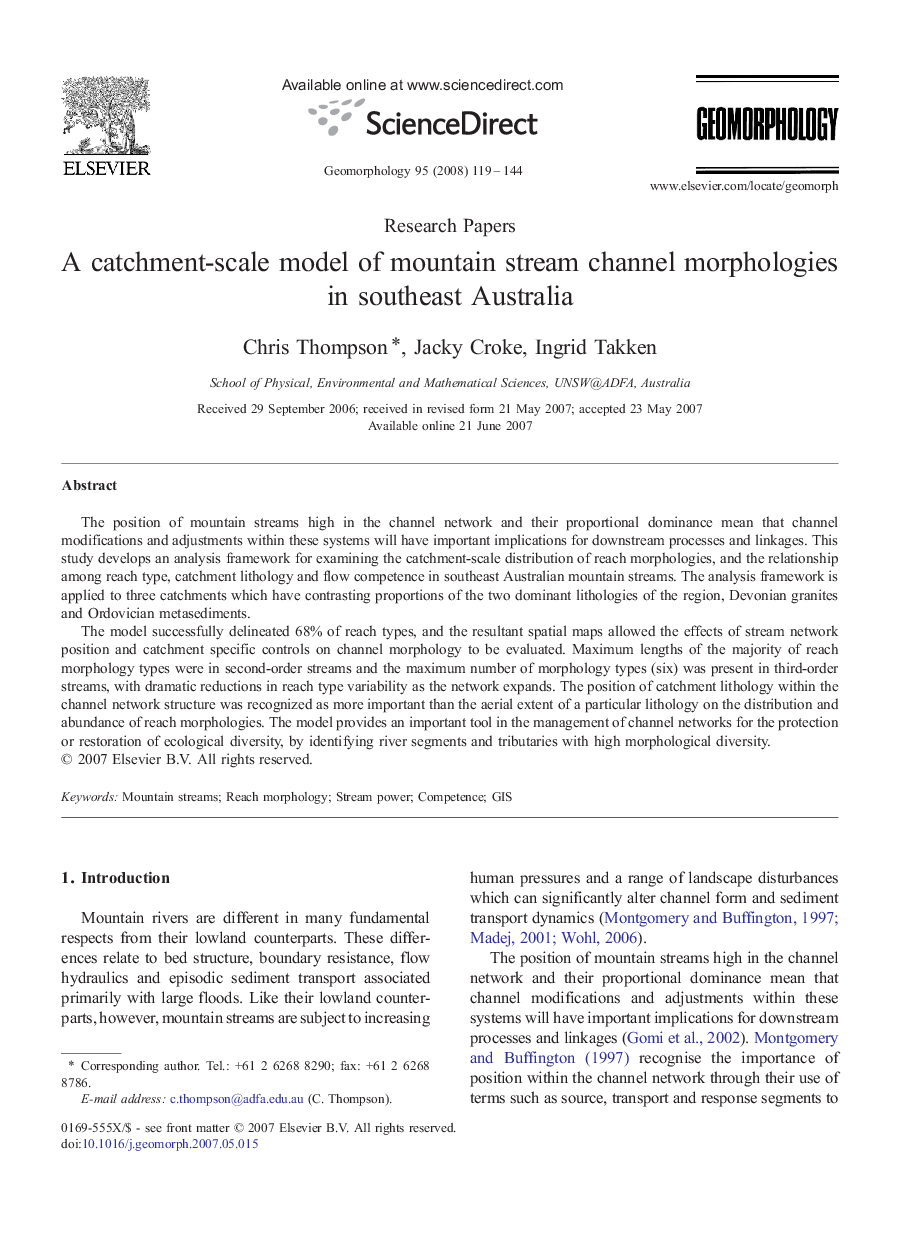| Article ID | Journal | Published Year | Pages | File Type |
|---|---|---|---|---|
| 4686858 | Geomorphology | 2008 | 26 Pages |
Abstract
The model successfully delineated 68% of reach types, and the resultant spatial maps allowed the effects of stream network position and catchment specific controls on channel morphology to be evaluated. Maximum lengths of the majority of reach morphology types were in second-order streams and the maximum number of morphology types (six) was present in third-order streams, with dramatic reductions in reach type variability as the network expands. The position of catchment lithology within the channel network structure was recognized as more important than the aerial extent of a particular lithology on the distribution and abundance of reach morphologies. The model provides an important tool in the management of channel networks for the protection or restoration of ecological diversity, by identifying river segments and tributaries with high morphological diversity.
Related Topics
Physical Sciences and Engineering
Earth and Planetary Sciences
Earth-Surface Processes
Authors
Chris Thompson, Jacky Croke, Ingrid Takken,
